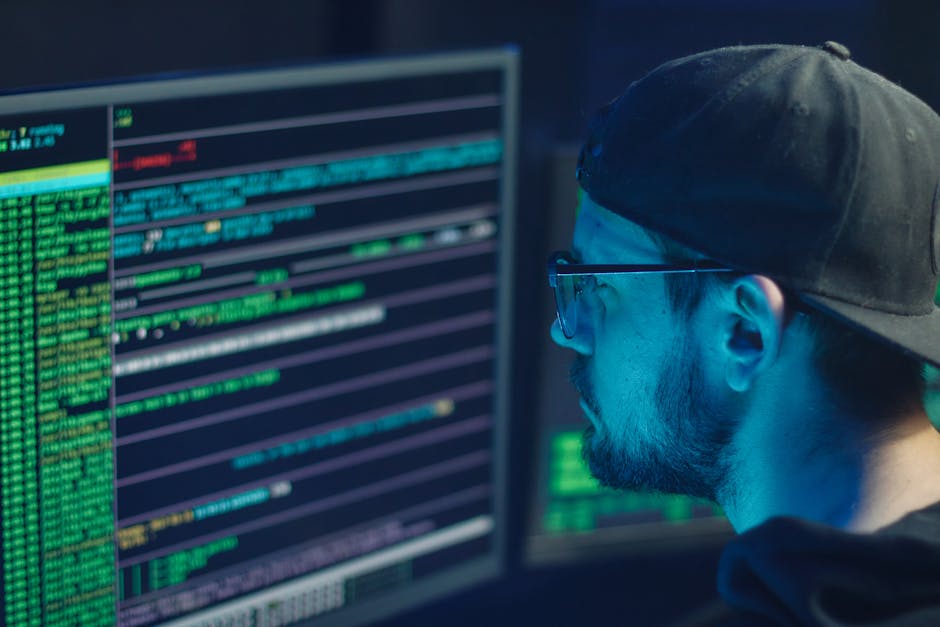Mastering Threat Detection: Essential Strategies for Modern Workplace Security
“In today's digital landscape, organizations face increasingly sophisticated cyber threats. This comprehensive guide explores modern threat detection approaches, implementation strategies, and how integrating advanced security measures can protect your workplace from evolving threats while maintaining operational efficiency. ”

Mastering Threat Detection: Essential Strategies for Modern Workplace Security
In today's rapidly evolving digital landscape, organizations face an increasingly complex array of cybersecurity threats. From sophisticated phishing campaigns to never-before-seen malware, the security challenges confronting IT managers and facility administrators continue to multiply. Implementing robust threat detection capabilities has become not just a technical necessity but a fundamental business requirement.

Understanding Threat Detection and Response
Threat detection and response (TDR) is the systematic process of identifying malicious activities that could potentially compromise an organization's environment, whether on-premises or in the cloud, and then taking appropriate actions to neutralize these threats before they can exploit vulnerabilities.
Unlike traditional security approaches that focus primarily on perimeter defense, modern threat detection takes a more comprehensive view, combining multiple detection methods to identify both known and unknown threats:
- Signature-based detection identifies threats by comparing activity against known patterns of malicious behavior
- Behavioral analytics spots anomalies by establishing baselines of normal user and system activities
- Machine learning algorithms continuously improve detection capabilities by analyzing patterns across vast datasets
The goal is to quickly identify potential security incidents and provide security teams with the information and tools they need to respond effectively before significant damage occurs.
The Evolving Threat Landscape
Today's cyber threats are highly evasive and increasingly sophisticated. Attackers constantly develop new techniques to bypass traditional security measures, making conventional detection methods insufficient on their own.
Common Threats Organizations Face:
- Social engineering attacks that trick users into compromising security or revealing sensitive information
- Ransomware that encrypts critical data and demands payment for its release
- Advanced Persistent Threats (APTs) that maintain long-term access to systems while evading detection
- Insider threats from employees or contractors with legitimate access to systems
- Zero-day exploits that target previously unknown vulnerabilities
For IT and facility managers, understanding these threats is essential for implementing appropriate security measures and protecting organizational assets.
Building an Effective Threat Detection Strategy
Developing a comprehensive threat detection strategy requires a multi-layered approach that addresses various aspects of security:
1. Establish a Security Operations Center (SOC)
A centralized Security Operations Center serves as the command post for monitoring, detecting, and responding to security incidents. Whether in-house or outsourced through a managed security service provider, a SOC provides:
- 24/7 monitoring of security events
- Coordinated incident response
- Threat intelligence analysis
- Continuous improvement of security posture
For organizations with limited resources, a virtual SOC or hybrid model can provide many of the same benefits without requiring the same level of investment.

2. Implement Comprehensive Monitoring
Effective threat detection requires visibility across the entire IT environment. This includes:
- Network monitoring to detect unusual traffic patterns or communication with known malicious IP addresses
- Endpoint detection and response (EDR) solutions that monitor devices for suspicious activities
- Log management systems that collect and analyze logs from various sources
- Cloud security monitoring for resources hosted in public, private, or hybrid cloud environments
By implementing comprehensive monitoring, organizations can detect threats regardless of where they originate or how they manifest.
3. Leverage Threat Intelligence
Threat intelligence provides contextual information about potential threats, helping security teams prioritize their efforts and respond more effectively. Sources of threat intelligence include:
- Commercial threat feeds
- Industry-specific information sharing groups
- Government agencies
- Open-source intelligence
Integrating threat intelligence into detection systems helps identify emerging threats and provides valuable context for security analysts investigating potential incidents.
4. Automate Where Possible
Automation plays a crucial role in modern threat detection by:
- Reducing the time between detection and response
- Eliminating repetitive tasks that consume analyst time
- Ensuring consistent application of security policies
- Scaling detection capabilities as the organization grows
Workflow optimization tools can help streamline security processes, allowing teams to focus on high-value activities rather than routine tasks.
Implementing Advanced Detection Technologies
Modern threat detection relies on several key technologies that work together to provide comprehensive protection:
Artificial Intelligence and Machine Learning
AI and machine learning systems can analyze vast amounts of data to identify patterns that might indicate malicious activity. These technologies:
- Learn from historical data to improve detection accuracy
- Adapt to new threats without requiring manual updates
- Reduce false positives that can overwhelm security teams
- Detect subtle anomalies that might escape human notice
As threats evolve, AI-powered detection systems continue to learn and improve, providing increasingly effective protection.
Behavioral Analytics
Rather than looking for specific signatures of known threats, behavioral analytics establishes baselines of normal behavior and flags deviations that might indicate compromise:
- User behavior analytics (UBA) monitors how users interact with systems and data
- Entity behavior analytics (EBA) tracks the behavior of devices, applications, and network elements
- Network traffic analysis identifies unusual communication patterns
By focusing on behavior rather than specific threat indicators, these systems can detect novel attacks that might bypass traditional security controls.

Integrated Security Platforms
Modern threat detection often relies on integrated security platforms that combine multiple capabilities:
- SIEM (Security Information and Event Management) systems collect and correlate data from various sources
- SOAR (Security Orchestration, Automation, and Response) platforms automate incident response workflows
- XDR (Extended Detection and Response) solutions provide unified visibility across endpoints, networks, and cloud environments
These integrated platforms help organizations overcome the challenges of managing multiple disconnected security tools and provide a more cohesive approach to threat detection.
Balancing Security with Operational Efficiency
While robust threat detection is essential, it must be implemented in a way that supports rather than hinders business operations. This requires:
Prioritizing Based on Risk
Not all threats pose the same level of risk, and not all assets require the same level of protection. A risk-based approach to threat detection:
- Focuses resources on protecting the most critical assets
- Prioritizes detection and response based on potential impact
- Aligns security measures with business objectives
- Optimizes security spending for maximum effectiveness
By understanding the specific risks facing your organization, you can implement targeted detection measures that provide the greatest security benefit.
Integrating with Business Processes
Security should be integrated into business processes rather than treated as a separate function. This integration:
- Ensures security considerations are part of decision-making
- Reduces friction between security and business operations
- Promotes a culture of security awareness
- Enables more efficient workflow optimization
When security is woven into the fabric of the organization, threat detection becomes a natural part of operations rather than an obstacle to productivity.
Training and Awareness
Even the most sophisticated threat detection systems rely on human judgment and expertise. Investing in training and awareness:
- Helps users recognize and report potential threats
- Builds a security-conscious culture
- Reduces the likelihood of successful social engineering attacks
- Ensures security teams have the skills to use detection tools effectively
Regular training and awareness programs should be part of any comprehensive threat detection strategy.
Measuring the Effectiveness of Threat Detection
To ensure that threat detection efforts are delivering value, organizations should establish metrics and regularly evaluate performance:
Key Performance Indicators
Useful metrics for evaluating threat detection effectiveness include:
- Mean time to detect (MTTD) - how quickly threats are identified
- Mean time to respond (MTTR) - how quickly the organization responds once a threat is detected
- False positive rate - the proportion of alerts that turn out not to be actual threats
- Coverage - what percentage of the environment is monitored by detection systems
Tracking these metrics over time helps identify areas for improvement and demonstrates the value of security investments.

Regular Testing and Validation
Regular testing helps ensure that detection systems are functioning as expected:
- Penetration testing simulates real-world attacks to identify gaps in detection
- Red team exercises test the organization's ability to detect and respond to sophisticated attacks
- Tabletop exercises walk through response procedures for various scenarios
- Automated testing regularly validates that detection rules are working properly
These testing activities provide valuable feedback that can be used to refine and improve detection capabilities.
Future Trends in Threat Detection
As technology evolves, so too will threat detection capabilities. Some emerging trends to watch include:
Zero Trust Architecture
The zero trust model assumes that threats may exist both outside and inside the network perimeter. This approach:
- Verifies every user and device attempting to access resources
- Applies the principle of least privilege
- Continuously monitors and validates access
- Provides a more robust foundation for threat detection
As organizations adopt zero trust principles, their ability to detect and contain threats will improve significantly.
Cloud-Native Security
As more workloads move to the cloud, threat detection must evolve to address cloud-specific threats:
- Cloud security posture management (CSPM) identifies misconfigurations and compliance issues
- Cloud workload protection platforms (CWPP) secure applications running in the cloud
- Cloud access security brokers (CASB) monitor cloud service usage and enforce security policies
These cloud-focused detection capabilities help organizations maintain security as they transform their IT environments.
Extended Detection and Response (XDR)
XDR represents the next evolution of threat detection, providing:
- Unified visibility across multiple security domains
- Automated correlation of alerts from different sources
- Streamlined investigation and response workflows
- Improved detection of sophisticated, multi-stage attacks
As XDR solutions mature, they promise to significantly enhance organizations' ability to detect and respond to complex threats.
Conclusion: Building a Resilient Security Posture
Effective threat detection is not just about implementing technology—it's about building a resilient security posture that can adapt to evolving threats. This requires:
- A strategic approach that aligns security with business objectives
- Investment in both technology and human expertise
- Continuous improvement based on lessons learned
- Integration of security into all aspects of operations
By taking a comprehensive approach to threat detection, organizations can better protect their assets, maintain operational efficiency, and build confidence in their ability to withstand cyber threats.
For IT managers, facility administrators, and security professionals, the journey toward effective threat detection is ongoing. By staying informed about emerging threats and technologies, continuously refining detection capabilities, and fostering a culture of security awareness, organizations can significantly reduce their risk exposure and respond more effectively when incidents do occur.
The most successful security programs recognize that threat detection is not just a technical challenge but a business imperative that requires ongoing attention and investment. With the right approach, organizations can build detection capabilities that provide meaningful protection without impeding the activity-based workplace revolution that is transforming how we work.